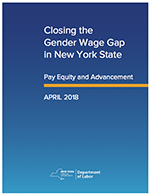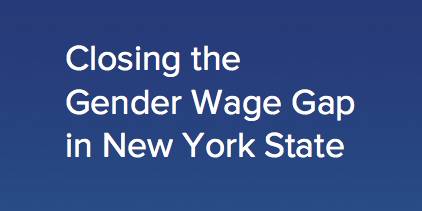 In 2017, Governor Cuomo directed the Department of Labor to study the causes, scope and economic impact of the gender pay gap in New York State and issue policy recommendations to help close it. The study is co-chaired by Lieutenant Governor Kathy Hochul and State Labor Commissioner Roberta Reardon. As part of the study, the Department of Labor conducted pay equity hearings in New York City, Syracuse, Long Island and Buffalo to solicit testimony identifying specific causes of the gender wage gap and suggestions on ways in which the wage gap can be closed, either in its entirety, or in particular industries.
In 2017, Governor Cuomo directed the Department of Labor to study the causes, scope and economic impact of the gender pay gap in New York State and issue policy recommendations to help close it. The study is co-chaired by Lieutenant Governor Kathy Hochul and State Labor Commissioner Roberta Reardon. As part of the study, the Department of Labor conducted pay equity hearings in New York City, Syracuse, Long Island and Buffalo to solicit testimony identifying specific causes of the gender wage gap and suggestions on ways in which the wage gap can be closed, either in its entirety, or in particular industries.
The report, available here, outlines the state of the gender pay gap in New York, including its scope across the economic spectrum and throughout each regions of the state.
Read the excerpted Executive Summary below:
New York State has a long and proud tradition of leading on women’s rights issues – from the movement’s inception in Seneca Falls in 1848, to 1917 when New York women won the right to vote (three years before the 19th Amendment was ratified), to the passage of the historic Women’s Equality Agenda in 2015.
But despite significant progress in New York and across the nation, a distinct gender pay gap persists. This is a societal issue. Either directly or indirectly, the gender pay gap affects everyone.
The face value implications of the gender pay gap are clear – women make less than men for equal work. However, the gender pay gap serves also as an indicator of a deeper, more insidious set of issues that affect women and those close to them and compound over the course of their entire life.
Eliminating the wage gap is a family issue. When women are underpaid, their children suffer. The poverty rate for single-mother families is more than 26%, meaning single mothers are significantly more likely than two parent or single-father families, at 13%, to be living in poverty. There are 11 million single-parent families in the United States and nearly 80% of them, including 17.2 million children they represent, are headed by single mothers. More than a third of New York households with children are single-parent families and more than 500,000 (78%) of single-parent families are headed by single women. Eliminating the wage gap would especially boost earnings in low-income households.
Eliminating the wage gap will help the economy. A more equitable pay scale between men and women would help families save more for the future and purchase basic goods and services, which helps drive the economy. Closing the pay gap could also bring more women into the workforce – enhancing one of the influences that lead to growth in the Gross Domestic Product (GDP). One report estimates that equal pay would add $4.3 trillion to U.S. GDP by 2025 and New York State’s economy could see $17 billion added each year if women were paid the same as men.
Eliminating the wage gap will help businesses. Not only will eliminating the wage gap help businesses boost profits, it will make them more appealing to a larger talent pool. Having more women in senior leadership roles and a diverse gender workforce is linked to reduced employee turnover and the associated costs. In addition, increasing the number of women on corporate boards has been linked to improved financial performance.


